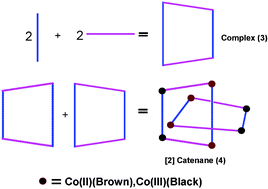

Synthesis of High nuclearity clusters & Grids
The unique strategies to produce coordination complexes bearing large numbers of transition metal centers include direct synthesis from a polyfunctional ligand and metal salts. The coordination ability of a metal ion and the topicity of a ligand or a ligand precursor (e.g. template syntheses) play a crucial role in the process of self-assembly.
Self-assembly is a powerful approach that involves the encoding of coordination information into a ligand, and then using a metal ion to interpret and use this information, according to its own coordination preferences, in order to organize the growth of large polynuclear metal ion arrays.
Polynuclear clusters are interesting from a variety of viewpoints, including their inherent beauty, but more practically because they provide routes to novel magnetic materials, potential catalysts, and in the context of a ‘bottom up’ approach to ‘devices’ based on molecules, an entry into the electronic, and perhaps magnetic, high technology arena of the future.
Grid arrangements of transition metal ions bridged in close proximity are viewed as ‘quantum dot’ like arrays of communicating spin centers and are very attractive platforms for switching and data storage at the molecular level.
Our current research projects in this area involve studies on square [nxn] grids (n=2, 3, 4, 5), with magnetically and electrochemically active metal ions, e.g. Mn(II), Fe(II), Fe(III), Co(II), Ni(II), Cu(II). Such systems are obtained by self-assembly synthetic strategies and studied using structural, magnetic, electrochemical, and epr techniques. Strategies for larger [nxn] grids (n = 6, 8) are being developed with hexa- and octa-topic ligands as targets.
Triakontahexanuclear Cu(II)36



